Introduction — quick note
Designing a master bedroom is about more than pretty pillows. It’s about making a space that helps you rest, feel calm, and start the day right. In this guide, I’ll walk you through layout, colours, lighting, furniture, storage, and style choices. The focus keyword here is master bedroom interior design, and I’ll use it naturally as we go. Ready? Let’s get practical.
Why master bedroom interior design matters
Your bedroom is where you sleep, recharge, and sometimes work. The right design reduces stress and boosts comfort. A thoughtful master bedroom interior design can improve sleep and make mornings easier. It also increases your home’s appeal if you ever sell.
Start with the layout
Measure first
Before buying anything, measure the room. Note door swings, window positions, and radiators. A simple sketch with dimensions saves money and headaches.
Plan traffic flow
Leave 24–30 inches (60–75 cm) of walking space around the bed. Keep pathways to doors and closets clear. Think of the room like a mini-map — cluttered paths make the space feel smaller.
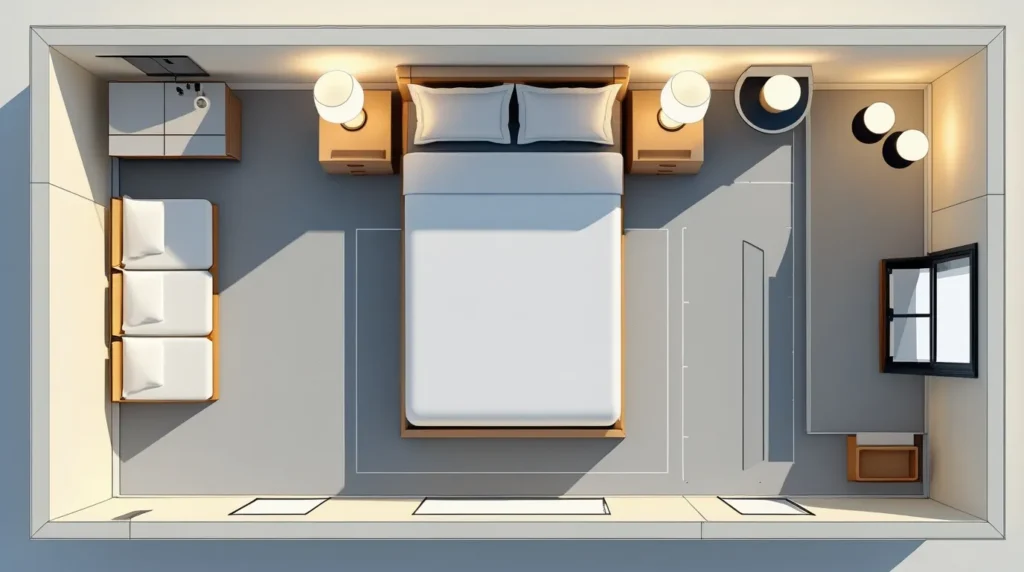
Bed placement rules
Place the bed against the longest wall if possible. Aim for a view of the door from the bed — it feels safer. But don’t force it; sometimes a centred bed with bedside tables is the most balanced option.
Zoning: make the room do more
Create simple zones
Divide the room into sleeping, dressing, and lounging zones. Use rugs, lighting, or furniture placement to define these areas. A chair and a small table can become a reading nook without stealing space.
Multi-function furniture
Consider a bench with storage at the foot of the bed, or a dresser that doubles as a TV stand. Multi-use pieces keep the room tidy.
Colour schemes & palettes
Calming palettes
Soft neutrals, muted blues, and warm greys promote rest. If you want cosy, go for warm tones like beige or soft terracotta.
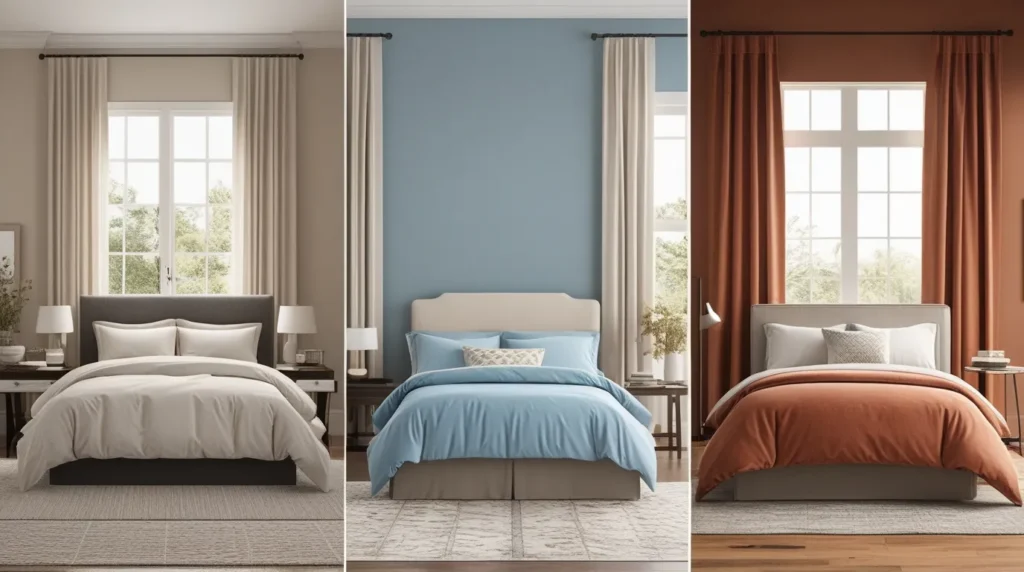
How to add contrast
Use darker shades on one accent wall or through textiles. A deep blue headboard or charcoal throw pillows add depth without overwhelming the space.
Accent colours
Introduce colour with pillows, artwork, or a feature rug. Accent colours are easy to swap when tastes change.
Lighting design
Use layers
Good lighting has three layers: ambient, task, and accent. Ambient is the general light. The task is reading lamps or vanity lighting. Accent highlights art or architectural features.
Natural light
Maximise daylight with sheer curtains or blinds that lift. Natural light boosts mood and helps regulate sleep cycles.
Dimmers and controls
Dimmers let you tweak brightness for different times of day. Smart bulbs or a simple dimmer switch are both great upgrades.
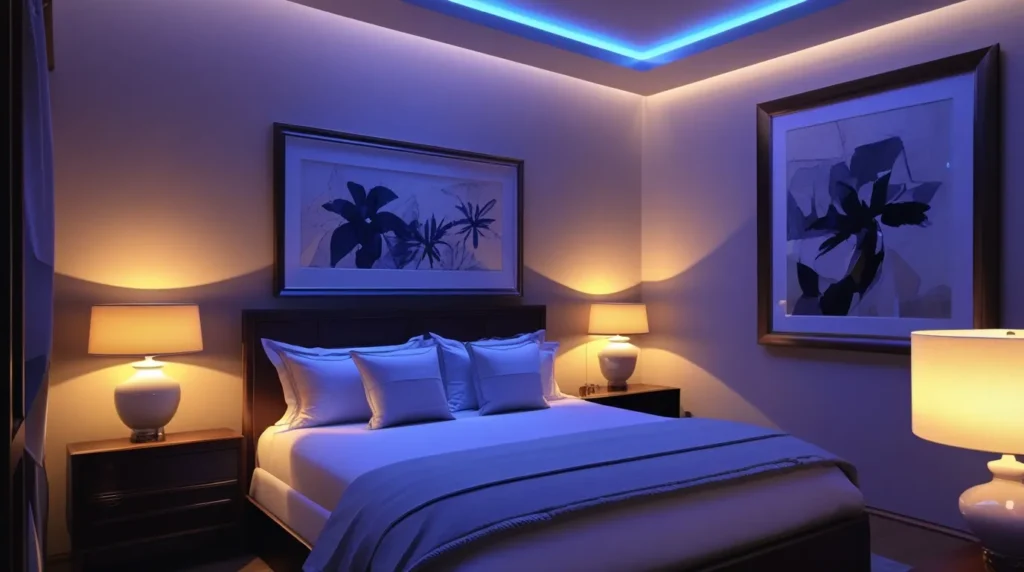
Furniture selection
Choose the right bed
Pick a bed size that fits the room. A king bed in a small room will squeeze everything else out. Prioritise mattress comfort over a fancy frame.
Nightstands and balance
Nightstands keep essentials handy. Aim for symmetry — matching lamps on each side gives a restful look.
Storage-friendly pieces
Tall dressers save floor space. Floating shelves keep the floor clear and feel modern.
Textures & fabrics
Bedding matters
Soft sheets, a warm duvet, and layered blankets make the bed inviting. Cotton and linen breathe. Consider a heavier quilt for cold seasons.
Rugs and curtains
A rug softens hard floors and defines zones. Curtains add colour and block light. Choose a rug size that fits under the front two-thirds of the bed for a grounded look.
Mix textures
Combine smooth linens with chunky knits or a velvet cushion to add depth. Texture makes a room feel lived-in and comfortable.
Wall treatments & décor
Paint vs wallpaper
Paint is simple and flexible. Wallpaper can add pattern and personality. Use wallpaper on an accent wall to avoid overdoing it.
Headboard as art
A headboard or wall hanging behind the bed anchors the room. Think of it as a frame for your sleeping area.
Gallery walls
Cluster art or photos above a dresser. Keep frames consistent in tone for a cohesive look.
Storage solutions
Closet planning
Use vertical space. Install double hanging rods, shelves, and hooks. A few clear bins keep accessories visible and tidy.
Under-bed storage
Low boxes or drawers under the bed are perfect for seasonal items. They make good use of otherwise wasted space.
Hidden storage
Choose ottomans or benches that open up. A bed with built-in drawers is a smart long-term solution.
Flooring options
Hardwood
Hardwood feels warm and timeless. Add an area rug for comfort near the bed.
Carpet
The carpet is cosy and warm underfoot. Choose low-pile options if you prefer easy cleaning.
Alternative floors
Engineered wood or luxury vinyl can mimic wood and handle humidity better in some climates.
Personalisation & style themes
Modern
Clean lines, neutral colours, and minimal clutter. Focus on a few high-quality pieces.
Minimalist
Less is more. Keep surfaces clear and use storage to hide items away.
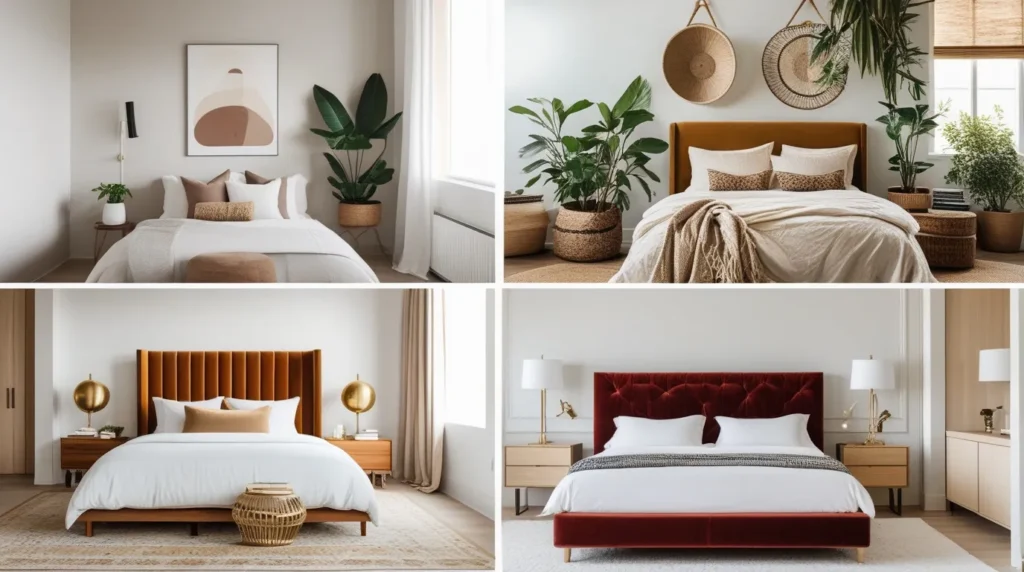
Boho
Layer patterns, plants, and mixed textures. Boho feels relaxed and personal.
Luxe
Think plush fabrics, metallic accents, and rich colours — but keep it simple so the room still feels calm.
Smart & functional features
Smart lighting
Program lights for wake-up routines or dimming at night. Even basic smart bulbs add convenience.
Outlets where you need them
Add bedside outlets with USB ports. A charging station keeps devices out of the way.
Window treatments
Blackout curtains help with sleep. Sheers layered under a heavier curtain give both privacy and light control.
Small master bedroom tips
Go vertical
Tall bookshelves or narrow dressers draw the eye up and make ceilings feel higher.
Choose light colours
Lighter paints reflect light and make the room feel larger.
Skip a large headboard
If space is tight, a slim headboard or wall-mounted shelf saves inches.
Budget-friendly updates
Swap hardware
Changing drawer pulls and knobs refreshes furniture for a small cost.
Fresh coat of paint
Paint is one of the best value-for-money updates. A new wall colour changes the mood fast.
Rearrange and edit
Sometimes, a new layout and removing clutter are all you need to feel like the room has been redesigned.
Common mistakes to avoid
- Ignoring scale. Big furniture in a small room makes it cramped.
- Too many patterns. Keep patterns balanced with solids.
- Poor lighting. A single overhead light won’t cut it. Layer light.
- Skipping measurements. Always measure before buying furniture.
Room styling checklist (quick)
- Measure the room and doors.
- Decide bed placement.
- Choose a calming colour palette.
- Add layered lighting.
- Select rugs and curtains.
- Plan storage and furniture scale.
- Personalise with art and textiles.
How to pick a style you’ll stick with
Ask yourself: What makes me feel calm? Do I like bright colours or neutral tones? Use a mood board app or a simple collage of images. Test a few elements before committing—small changes can show whether a style fits.
Sustainable choices that look good
Choose durable furniture, natural fibres, and long-lasting finishes. Secondhand pieces can add character and save money. Sustainable choices often improve the room’s story and comfort.
Putting it all together: a mini design plan
- Measure and pick a layout.
- Choose 2–3 main colours: base, accent, and trim.
- Select the bed and the largest furniture first.
- Add layered lighting.
- Bring in textiles and textures.
- Add personal items and art last.
This order keeps decisions simple and prevents impulse buys.
Final thoughts on master bedroom interior design
Good master bedroom interior design is a mix of function and feeling. Start by planning the layout, then choose colours and lighting that make you feel calm. Pick furniture that fits the room and adds storage. Textures, rugs, and art give personality. Small, thoughtful changes often have the biggest impact. Take it step by step and focus on what helps you rest and relax.
Frequently Asked Questions
Q1: How do I choose the best colour for a master bedroom?
Pick a colour that makes you feel calm. Test swatches on the wall and view them at different times of day. Use one main colour and add accents rather than painting everything in a bold hue.
Q2: What size rug should go under my bed?
Choose a rug that extends at least 18–24 inches (45–60 cm) beyond the sides and foot of the bed. For larger rooms, a rug that fills the sleeping zone looks balanced.
Q3: How can I make a small master bedroom look bigger?
Use light colours, keep furniture low-profile, and add mirrors. Clear clutter and create vertical interest to draw the eye up.
Q4: Is wallpaper a good idea in a bedroom?
Yes, as an accent wall. Wallpaper adds pattern and texture. Avoid busy patterns on all four walls, which can feel overwhelming.
Q5: What lighting is best for reading in bed?
Choose focused task lighting like adjustable wall sconces or a bedside lamp. Make sure the light can be dimmed to avoid harsh glare.

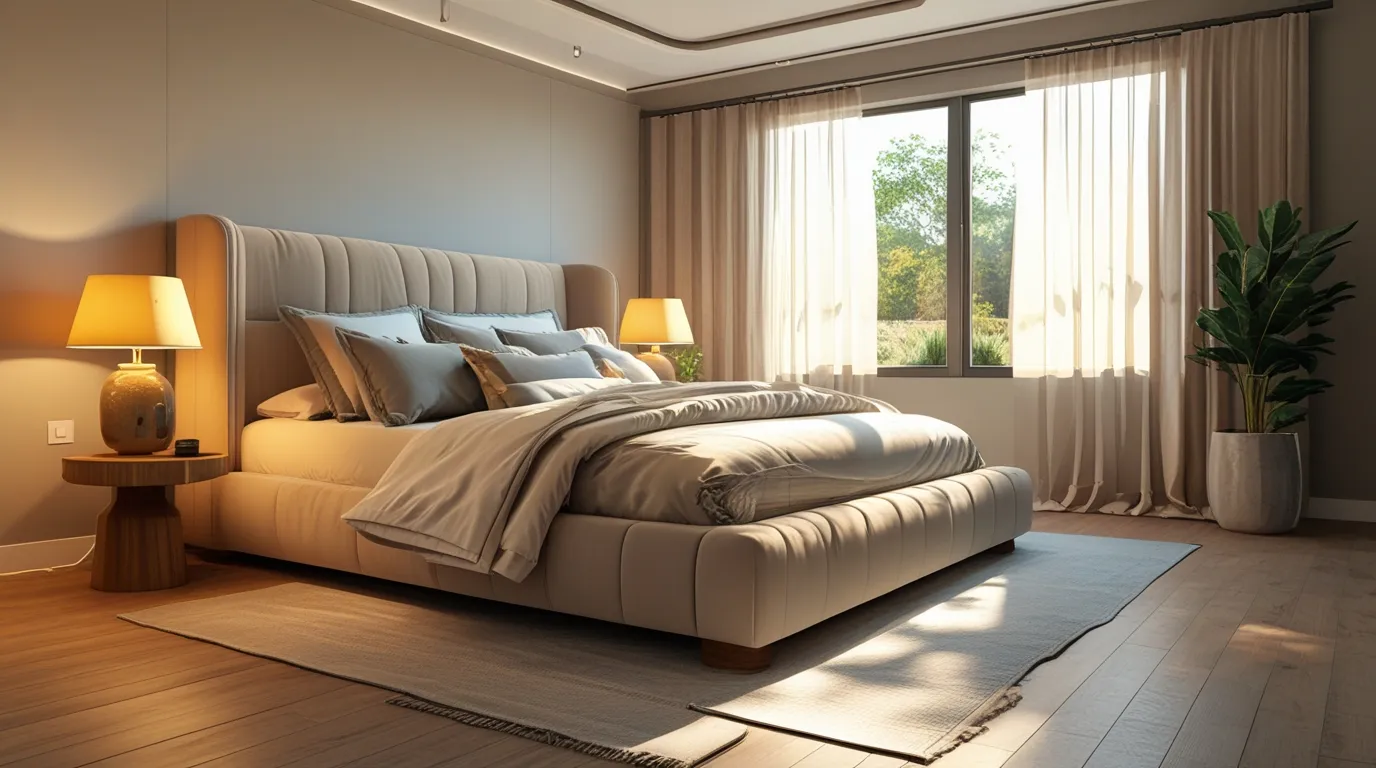
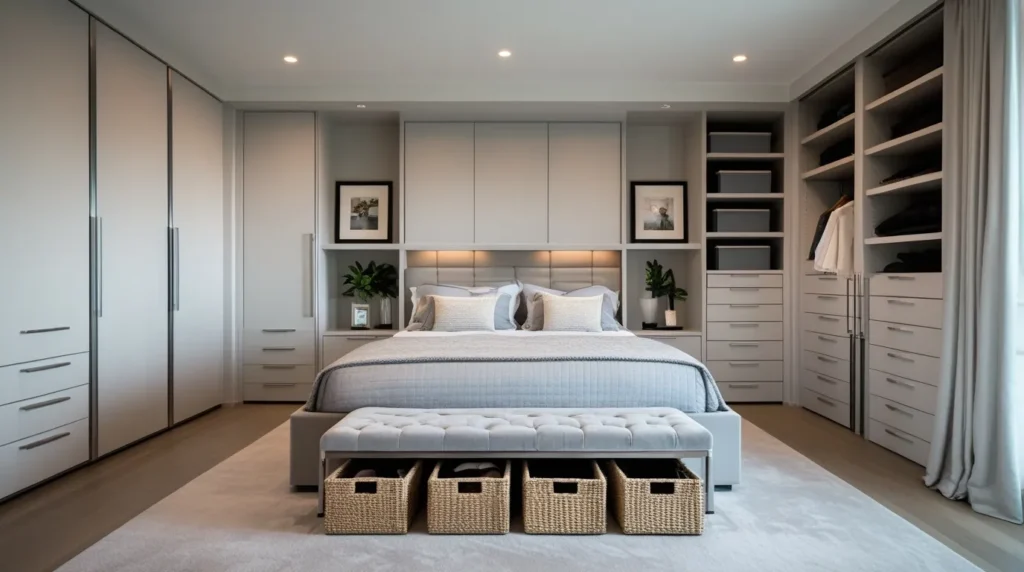
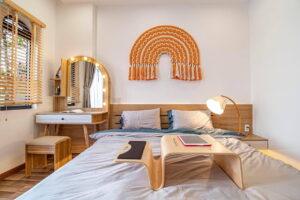
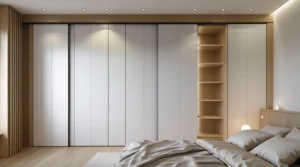
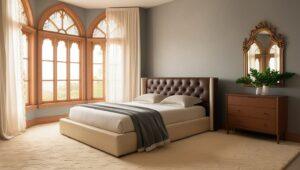
обслуживание водонагревателя https://fix-boiler-moskva.ru/